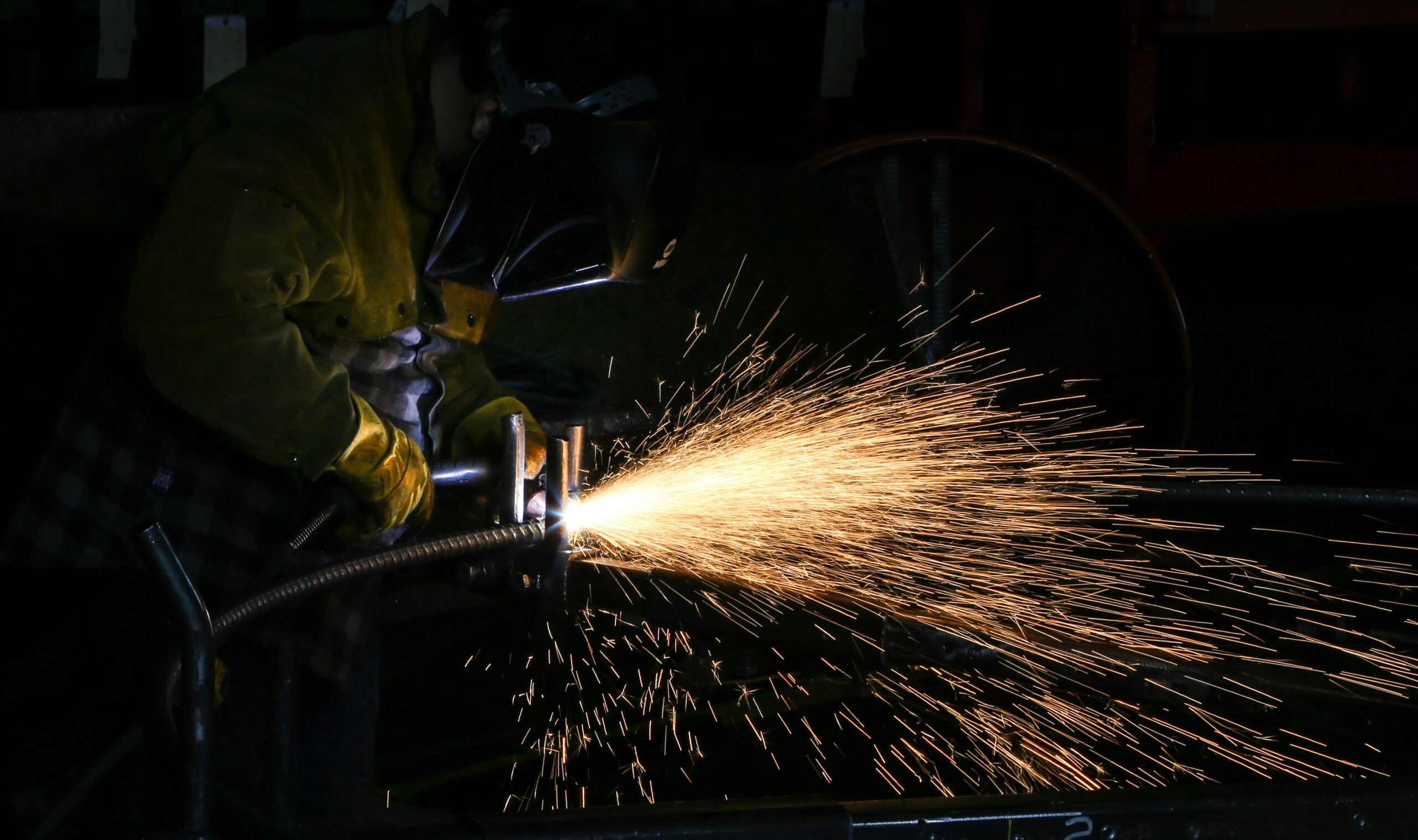In the high-pressure world of industrial construction, keeping track of every spool, fitting, and material certificate is more than just good practice. It is essential for meeting tight schedules, avoiding rework, and maintaining compliance with project specifications. Spool and material tracking systems using barcoding, near field communication (NFC), and radio frequency identification (RFID) have become essential technologies for fabricators who want to provide transparency, reduce errors, and deliver results faster.
This article explores how these modern tracking methods are transforming the spool and material tracking process and supporting better project outcomes in both shop and field environments.
Why Spool and Material Tracking Matters
In complex fabrication projects, thousands of components must be produced, inspected, delivered, and installed in the correct order. A single missing or misidentified spool can create cascading delays. Without a reliable system, material traceability becomes vulnerable to human error and miscommunication.
According to the U.S. General Services Administration (GSA), consistent documentation and material control are critical to managing quality across government-funded construction projects. Fabricators who can tie each component to its mill test reports (MTRs), weld logs, and inspection records are better equipped to meet client expectations and regulatory requirements.
Effective spool and material tracking offers:
- Real-time visibility into fabrication status
- Faster staging and shipping coordination
- Enhanced traceability for QA/QC documentation
- Fewer errors in field installation
- Time savings across procurement and logistics
Traditional vs. Modern Tracking Methods
Historically, tracking was done manually using spreadsheets or handwritten tags. This introduced opportunities for mislabeling or data entry errors, especially as projects scaled up in complexity. These outdated methods are not compatible with modern expectations for transparency and speed.
Modern spool and material tracking systems use digital tags that integrate with centralized databases. This shift not only reduces errors but also provides accurate reporting in real time, even across multiple job sites.
The Tools Behind Modern Tracking
1. Barcoding
Barcodes offer a simple and affordable way to tag pipe spools, supports, and structural components. Each barcode is unique and can be scanned using mobile devices or handheld scanners. This system works well for indoor shop environments and offers fast setup.
Barcodes can store:
- Spool ID and drawing number
- Heat number and material certification
- Weld procedure and welder ID
- Inspection and test status
Once scanned, the data can be uploaded directly to a fabrication tracking platform, reducing the need for manual input.
2. NFC (Near Field Communication)
NFC tags are compact, passive devices that communicate with mobile readers at short distances. These tags are particularly useful when quick, close-proximity scanning is needed without needing a line of sight. For instance, a welder or inspector can tap their device near a spool to pull up its status, drawings, or QA documentation instantly.
NFC is especially valuable in tight field conditions or areas where barcode labels may get damaged or obstructed.
3. RFID (Radio Frequency Identification)
RFID is rapidly becoming the gold standard for spool and material tracking in large-scale fabrication and construction. RFID tags can be read without direct visibility and from greater distances than barcodes or NFC. This allows fixed-position scanning (FPS) systems to automatically track movement within fabrication shops, staging yards, or loading areas.
With RFID, fabricators can:
- Automatically track spools as they move through different stages
- Set up checkpoints to verify work completion or inspection status
- Instantly locate missing spools or materials
- Reduce time spent on manual inventory
Integrating Tracking into Fabrication Workflows
Implementing a modern spool and material tracking system requires planning and integration with existing fabrication and project management systems. Leading fabricators tie tracking platforms into their ERP or quality assurance systems, allowing them to:
- Link spool IDs to production schedules
- Update weld logs and inspections in real time
- Trigger shipping based on work completion
- Generate reports for client turnover packages
This integration helps create a seamless chain of custody from material receipt to final installation.
Benefits for Shop and Field Teams
For Fabrication Shops:
- Automates log keeping and reporting
- Reduces delays from missing or misidentified materials
- Improves productivity by minimizing time spent searching for components
- Enhances QA/QC accuracy with linked documentation
For Field Crews:
- Spools arrive pre-tagged with complete data
- Reduces confusion during layout and fit-up
- Allows for rapid scanning to confirm delivery and readiness
- Simplifies inspection and reporting processes
This level of coordination improves both safety and schedule performance in the field.
Client Benefits and Transparency
Clients increasingly demand visibility into fabrication progress and traceability of materials. With barcoding, NFC, or RFID-enabled tracking, they can receive real-time updates and documentation with confidence.
By tagging each component, fabricators can show exactly when a spool was:
- Cut, welded, or bent
- Inspected or tested
- Shipped and received
- Installed in the field
This level of transparency builds trust, reduces change orders, and supports faster payment cycles.
What to Consider Before Implementing Spool Tracking
Not every system fits every fabrication environment. When selecting a spool and material tracking solution, consider:
- Scale: Large shops benefit most from RFID with fixed-position readers
- Environment: Barcodes work well indoors but may degrade in outdoor or dusty environments
- Budget: Barcoding is more cost-effective up front, while RFID offers long-term efficiency gains
- Integration: Choose systems that can connect with your QA, ERP, and project management platforms
Conclusion
Spool and material tracking systems using barcoding, NFC, and RFID are transforming how fabrication projects are managed from start to finish. These technologies help eliminate costly errors, accelerate production schedules, and provide the traceability today’s clients demand.
For fabricators, this shift is not just about modernization. It’s about delivering better projects, building stronger client relationships, and staying competitive in a market where visibility and accountability matter more than ever.
